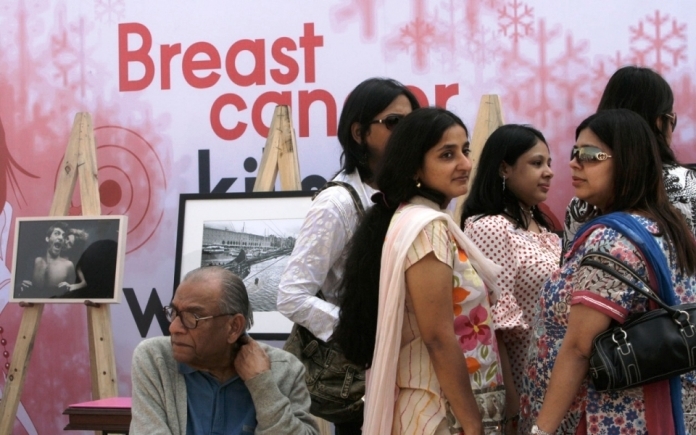Women are more prone to cancer than men: Study
New Delhi, March 17: Scientists have taken a step towards one of the biggest goals in medicine, discovering a universal blood test for cancer. Their vision is an annual test designed to catch cancer early and save lives. Globally, cancer cases in men far outnumber those in women, but a new paper has found that India observes a reverse trend in this regard.

Detecting cancer early isn’t easy. Currently, it’s done through visual inspections or biopsies, but some doctors may not pick up on the disease using the former, while some patients may not be able to afford the latter.
According to researchers from the National Institute of Cancer Prevention and Research-Indian Council of Medical Research (NICPR-ICMR) said that the proportion of women getting diagnosed with cancer in India is higher than men.
This is a huge contrast to the global age-standardised cancer incidence of men having a 25% higher incidence than women. However, in India, breast, cervical, ovarian, and uterine cancer account for more than 70% of cancers in women.
The number of new cancer cases for both sexes in India is over 1.5 million, and is predicted to nearly double in the next two decades. India’s real cancer incidence for women is estimated to be 1-1.4 million per year.
Sadly, survival rates in India are quite poor and less than 30% of cancer patients survive five years or more after being diagnosed. In 2015, reported incidence of cancer in India was 0.7 million, the third highest after China and the US. According to the data, around 2,00,100 men and 1,95,300 women die of cancer every year. However, the 2011 Census puts India's sex ratio at 943 females per 1,000 males, making the rate of cancer deaths in Indian women is higher than that in Indian men.
More than 90% of all female cancers are not inherited, so genomic screening is not a cost effective option. But if we can do a basic screening of 80% of the population, that would go a long way. There was an earlier plan but now work has started for training manpower for screening for cervical, breast and oral cancers.
The problem is that there are questions about how effective mammograms are for breast cancer screening. In our country, and we don’t have enough machines or trained radiologists to read mammograms. So, it is either a clinical examination or a breast self-examination. For cervical cancer, pap smear is too costly. There is the visual inspection with acetic acid for which people are being trained.
India launched the National Program for Prevention and Control of Cancer, Diabetes, Cardio Vascular Diseases and Stroke (NPCDCS), in 2010, under which screening was supposed to have been undertaken for cervical, breast and oral cancers.
In 2016, a similar plan to screen for cancers and CVDs was launched with an initial aim of rolling it out in 100 districts, the plan now covers 165 districts.

